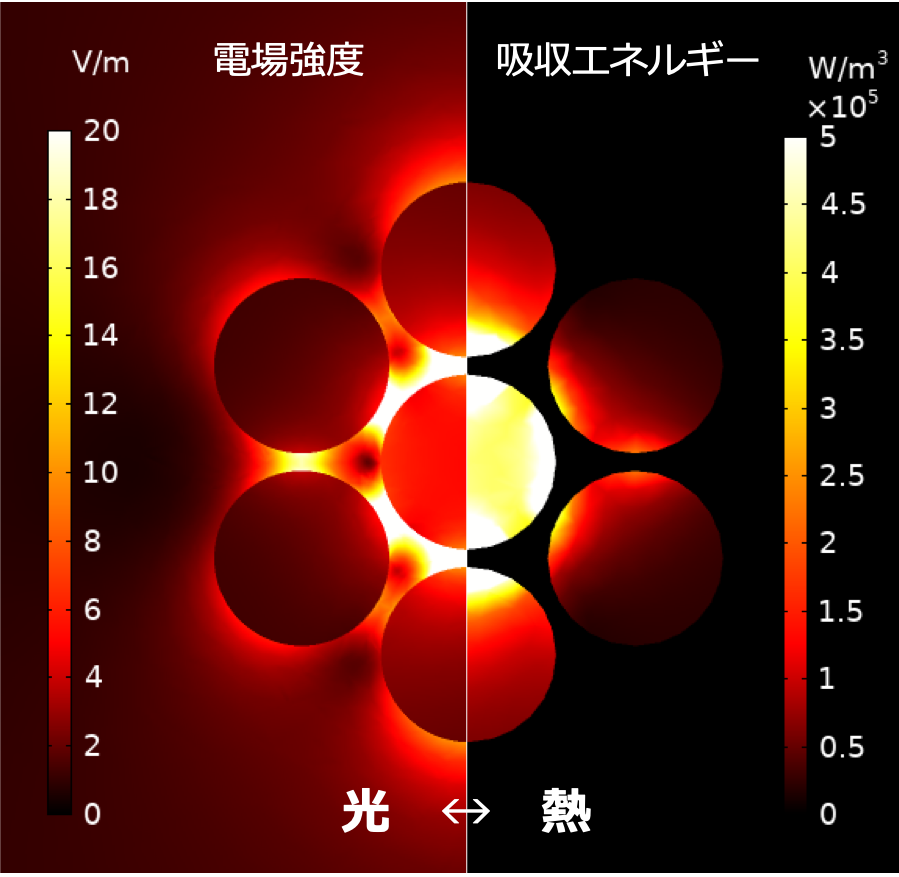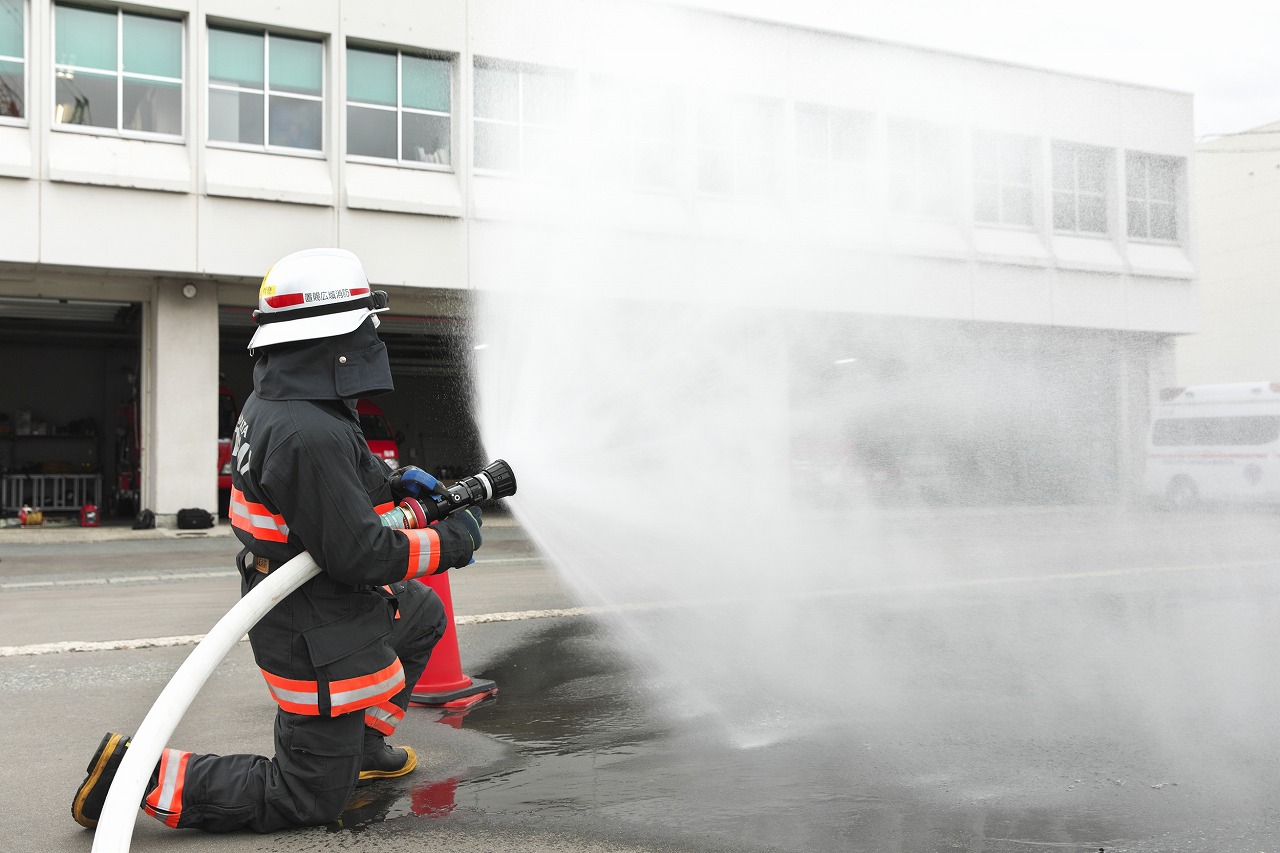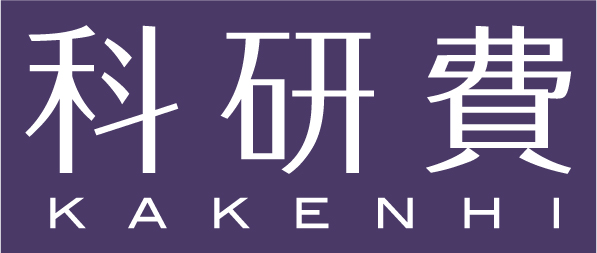Our works were supported by official organizations and private financial groups. We really appreciate their cooperations. List of support in researchmap.
Photothermal Conversion 光熱変換機構の解明

In order to secure sustainable modern energy (SDGs, Goal 7), it is important to develop technologies for effective utilization of solar energy by using photothermal conversion. In this research, we aim to clarify the photothermal conversion principle, to surpasses the heat energy recovery performance from light. We aim to create a new trend of design technology in energy transport mechanisms using electromagnetic waves.
持続可能な近代的エネルギーの確保(SDGs目標7)のため、光と熱の変換を利用した太陽光エネルギーの有効利用技術の発展は重要な課題です。本研究では、光と熱はどのような物理でエネルギー交換しているか(光熱変換原理)を明らかにし、これまで実現されてきた光からの熱エネルギー回収性能を超える新たな熱輸送制御技術の確立を目指すと共に、電磁波を利用したエネルギー輸送機構における新たな設計技術の潮流の創発を目指します。

本研究は科学技術振興機構(JST) 創発的研究支援事業の助成を受けております。
Reference Keywords: Photothermal cancer therapy, Plasmonics fluids, Solar energy
Control of Radiative Transfer by Scattering Media 散乱性媒体によるふく射伝熱制御

We developed a pigmented coating with low visible and high near-infrared reflectance. The nanoparticle-pigmented coatings enable to control the spectral reflectance. We have achieved spectral selective control by scattering media. This technology will help develop eco-friendly products and contribute to solving environmental problems.
可視光反射率が低く(黒色に見え)、近赤外光の反射率が高いコーティングを開発しました。測定と理論解析から、ナノ粒子の光散乱制御によってコーティングの分光反射率が制御可能であることを証明しています。この技術はエコフレンドリーな製品開発を助け、環境問題の解決に貢献します。
Reference Keywords: Environmental problem, Nano-technology
Thermal Barrier Mist ふく射熱遮蔽機能を有するミスト装置の開発

The purpose of this study is to establish firefighting equipment that can shield thermal radiation, which is the cause of fire spread and burns, by applying the spectral control technology of radiative heat transfer by scattering media. We will incorporate the perspective of radiative transfer into firefighting equipment, which has traditionally only considered water sprinkling performance for the purpose of extinguishing fires. This research represents an innovative paradigm shift in which a mist layer with a small amount of water has a higher radiative shielding performance than a water layer with a large amount of water.

本研究では、散乱性媒体を用いたふく射伝熱の波長制御技術を応用し、火災現場において延焼や火傷等の原因となっている熱ふく射を遮蔽できる消防装置の確立を目指しています。従来、消火という目的のため、散水性能しか考慮されなかった消防設備に、ふく射伝熱の視点を取り入れます。本研究は、水量の多い水膜よりも水量の少ないミスト層のほうがふく射遮蔽性能が高いという革新的なパラダイムシフトを示しました。
本研究は科研費(基盤B)の助成を受けております。
Reference Keywords: Mist, Fire, Convective-radiative coupling calculation
Thermal Design of Spacecrafts 宇宙機の熱設計

The objective of the thermal design of a spacecraft is to maintain all the components of the spacecraft system, including the structural system, in a temperature range that enables them to function and perform normally for the entire mission period. In the vacuum environment of space, radiative control is important in the thermal design. We are working with JAXA to evaluate the effects of dust adhesion on spacecraft and to develop conductive white paint for spacecraft.
宇宙機の熱設計の目的は、宇宙機システムを構成する構造系を含め、すべての機器を全ミッション期間にわたって機能・性能が正常に発揮できる温度範囲に維持することです。真空である宇宙では、この熱設計においてふく射熱制御が重要です。 我々は宇宙機へのダスト付着の影響評価や宇宙機用導電性白色塗料の開発などをJAXAと行っています。
Reference